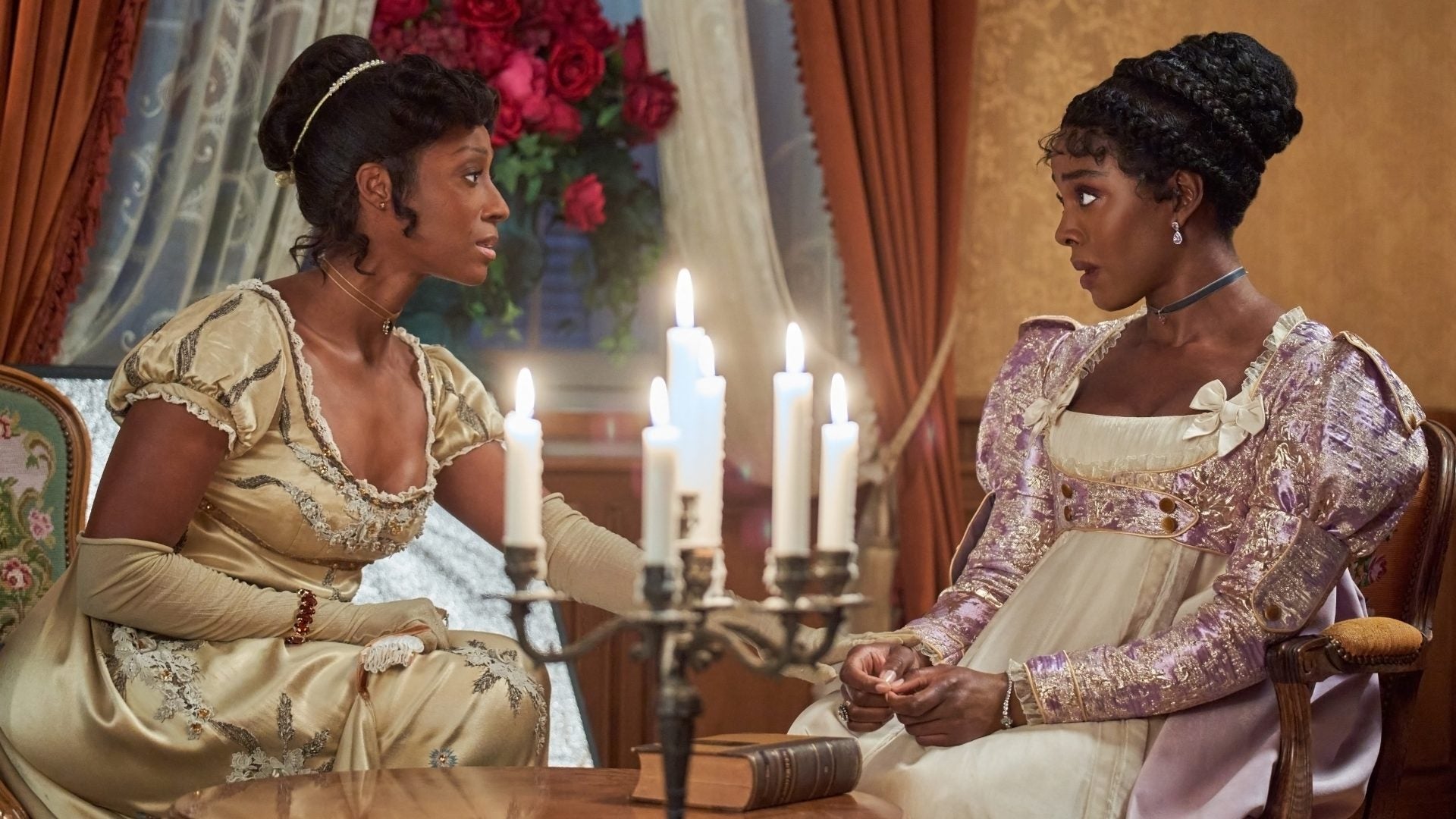
Black life and history could never be accurately defined by solely being in chains. In Hallmark Mahogany’s adaptation of author Jane Austen’s classic Sense and Sensibility, the hidden histories shared throughout the film transcend typical depictions of Black life. Viewers of the film are gifted with the opportunity to witness 19th-century Free Black men and women living full lives, a glimpse of the inner workings of The Ton, the history of interracial marriage and miscegenation in Europe and beyond, and how institutions and societal norms around marriage and gender roles shaped destinies. A part of the network’s Loveuary with Jane Austen, “Sense and Sensibility” is directed by Roger Bobb, executive produced by Jeff Beach and Tia A. Smith, and its creative team’s historical consultation was lead by historical fiction author and historian Vanessa Riley (Queen of Exiles, Sister Mother Warrior, Murder in Westminster). Hallmark Mahogany’s adaptation of “Sense and Sensibility” beautifully, yet subtly highlights Black historical figures and changemakers like Phillis Wheatley, Olaudah Equiano and Dido Elizabeth Belle.
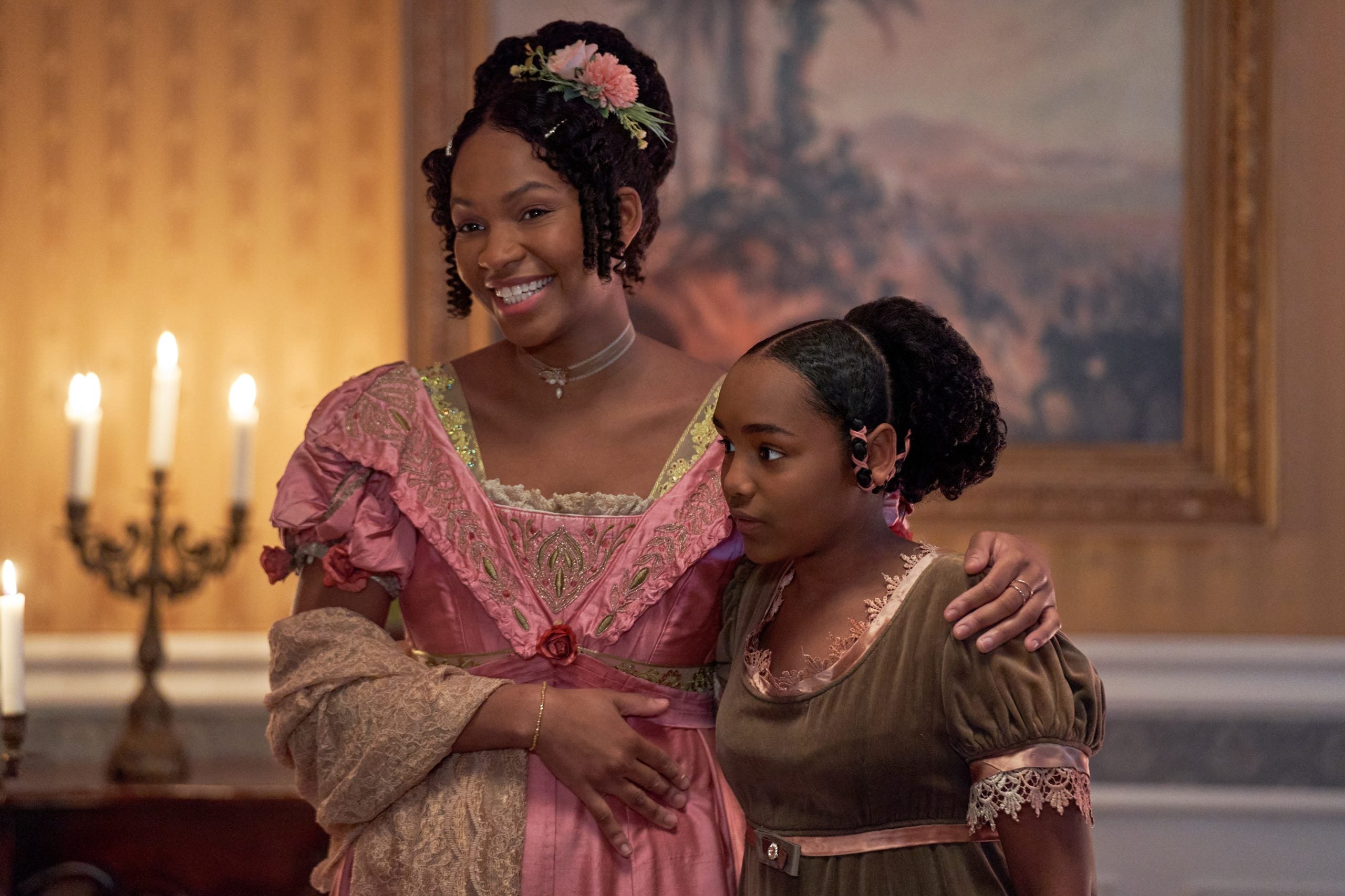
When the wealthy patriarch of the Dashwood household dies, the Dashwood women must leave their extravagant and glorious abode and take up residence in a very modest cottage in Devonshire. Soon, the elder more practical sister, Elinor (Deborah Ayorinde) falls for gentleman Edward Ferrars (Dan Jeannotte). Marianne (Bethany Antonia) the passionate middle sister is torn between two men. However, when things do not turn out as expected, many life lessons are learned. Set in Regency-era England, this adaptation centers on a predominantly Black and Ethnically Ambiguous cast, the universal themes present within the film transcend matters of race and delve into the complex issues of classism, marriage, widowhood, blended families, how societal norms shape perception, and the reality that life and circumstance happen to us all.
ESSENCE recently had the opportunity to speak with Riley, the film’s historian about the film. Riley clearly denotes that Black history transcends enslavement. And, that there was, and remains, a vast spectrum of Black life. She shares, “Enslavement is the great stain. It affects everyone. But, what people need to realize is that Regency history is Black history.”
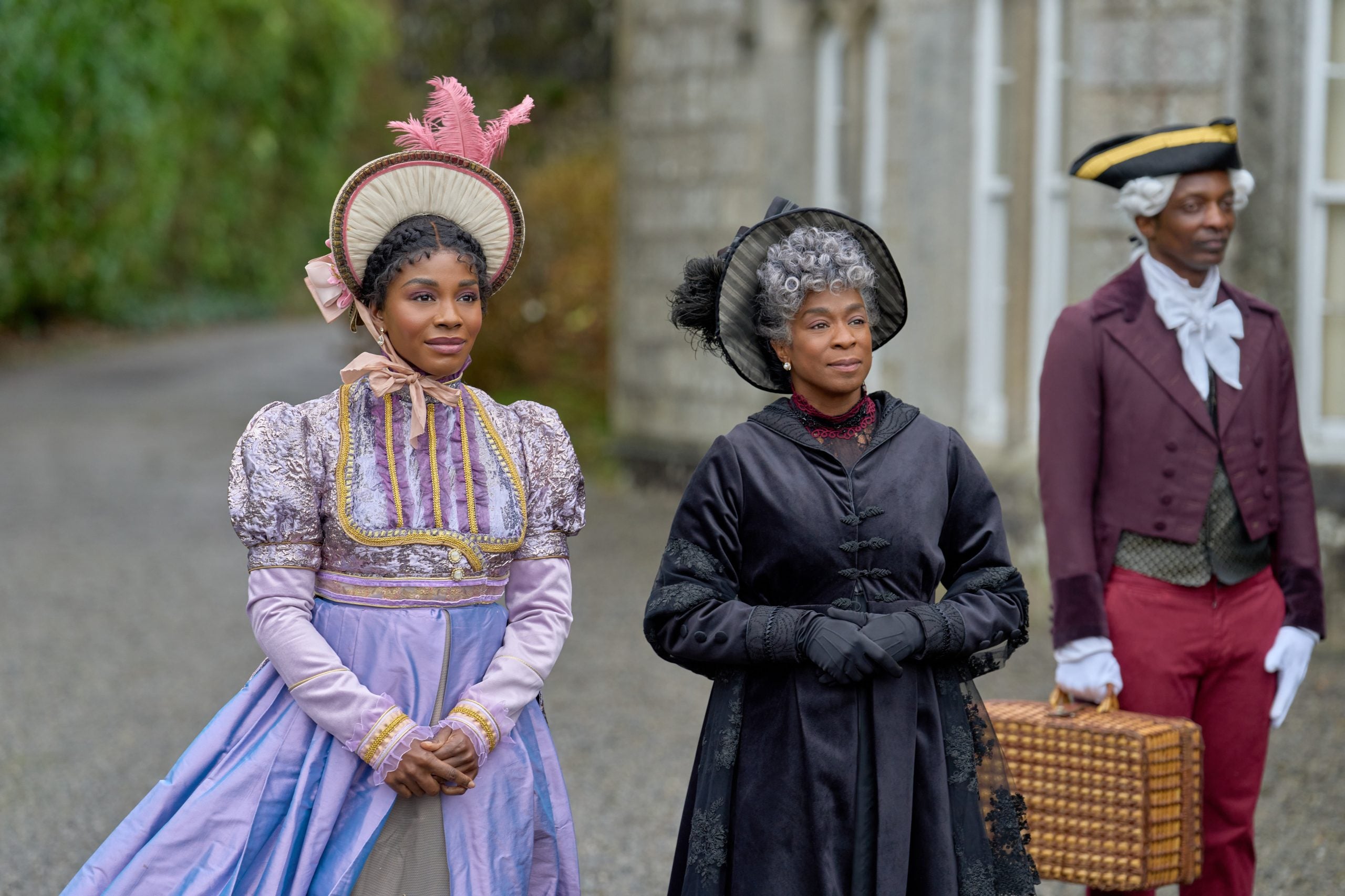
ESSENCE: Jane Austen’s Sense and Sensibility was published in 1811, and set sometime between 1792 and 1797. Is this adaptation of the novel historically accurate?
Vanessa Riley: Yes, it is. There have been quite a few adaptations of Jane Austen and the reason is that it resonates with everyone. But, what most people fail to realize is that she was extremely progressive in her views. That’s why when you get to Sanditon, she is one of the first authors who wrote literature in her period that places Miss Lambe, a Mulatta woman, and West Indian woman as the richest woman in the book. Jane Austen wrote about real people. There is an actual real Mr. Darcy who broke her heart. As of result of her connections with her family, Austen experienced women like Miss Lambe and included her in the literary canon. Jane Austen was very inclusive, and I think it’s natural for writers, producers, and storytellers to reimagine these narratives. From a historical perspective, many people only think of Black people from the context of enslavement. Our legacy is so much more nuanced than that.
Images and representations indicating wealthy, free Blacks never get old. But, what was the inspiration behind Hallmark Mahogany’s Sense and Sensibility adaptation with a Black leading cast?
Absolutely. I have to commend Toni Judkins, the Senior Vice President of, Hallmark Channel’s Mahogany. When I spoke to her two years ago, this was her passion project, and to see it come to life and to be a part of it, has been an exciting experience. Casting Black talent made sense. There was a thriving Black middle class during the Regency era. There were between 15,000 to 20,000 free Blacks living during this period. Yes, some of them may have been servants, but others were building businesses, and they became prime pickings for The Ton, which was often the case for European men without cash- because the oldest son usually gets everything. And, if you have two or three other brothers, you’re out of luck. They had to figure out how to maintain their lifestyles, and they had no problems dipping in and interracially dating and marrying.
Does the film employ colorblind casting, or was the casting deliberate to suggest historical accuracy about aspects of history that are not discussed often? For example, the Dashwood sisters had a white father, and are Black biracial. Was this an intentional nod to the subculture of Free Blacks marrying into white families?
Yes, this was what we call intentional casting. This is a very intentional casting of choosing the best actors and actresses. We chose a wonderful actor to play the father, and then we chose Suzanne Lawson to be the mother. Well, now that’s a pairing, right? Yes. And that’s where the daughters come from. So, the daughters are Black presenting, and they are mixed race. But, he had a prior wife who was white, and that’s where you get the half-brother relationship. Now, when you get to the Ferrars, you have a blended family. Fanny (Carlyss Peer), was a very fair-skinned woman of color, almost white-passing. We were deliberate in casting her as such to denote that in many instances, it was not about race but rather classism, and maintaining positions of power, even among some people of color and Blacks. Fanny is all about power, and maintaining her position. It’s purely a class issue. She believes she is above the Dashwood sisters. She wants that wealth and she doesn’t care. Though, a woman of color, that’s why she doesn’t want to associate with them.
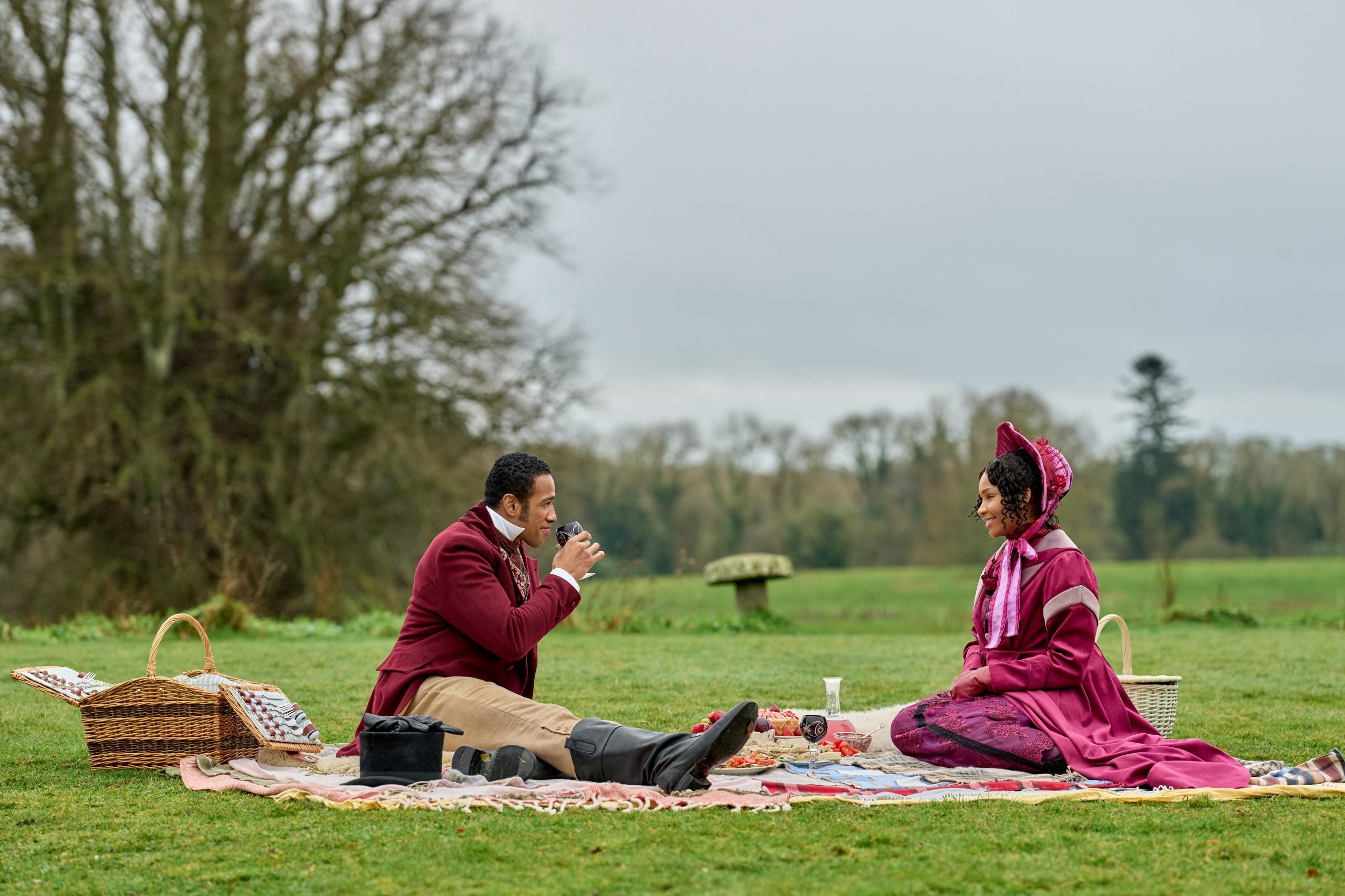
The Dashwood family are free Blacks, what are some little-known facts about free Blacks in the 18th and 19th centuries?
Free Blacks had mobility. One of my favorite stories is about a man named Cesar Picton. He was a servant gifted to Sir John Phillips, but Cesar later became a very wealthy coal merchant. He discovered that rich people didn’t like to touch coal, so he created a whole delivery service where he dropped coal off at Mayfair. He becomes extremely rich, and that’s the upward mobility that free Blacks experienced during this timeframe.
From a historical perspective, one of my favorite shots in the movie includes a portrait of Olaudah Equiano. He’s a man who was enslaved, buys his freedom, and writes a bestselling book about the Transatlantic Passage, and how he was stolen and brought to the West Indies, and then to Europe. That’s one of the first real accounts that we get of the horrendous nature of the passage.
The Dashwood sisters are very eager to find a husband. Can you speak to some of the cultural customs and societal norms around marriage during this period, and how they coincide with or juxtapose with how women now navigate marriage and ideals around marriage?
The options for women are extremely limited during this timeframe. And, marriage sets the tone for what’s going to happen in your life. Jane Austen is quite progressive in her novels. There are three widows in the film all in very different circumstances. So, you have Mrs. Dashwood, Mrs. Ferrar, and Mrs. Jennings. Mrs. Jennings was well loved, and well taken care of. She had access to properties, travel, and resources when her husband died. Then, there’s Mrs. Ferrars who is left enough money where she can control the fortunes of her stepsons. She’s symbolic of a smart-minded woman who is going to make sure that she marries well. Lastly, there’s Mrs. Dashwood who marries for love, and when her wealthy husband dies, her financial affairs are not in order. When you’re married, you need to get things in writing, especially if these are interracial or blended families. But, marriage during this timeframe, dictates everything. It determines your social class, who’s going to accept your children, and how they’re going to get opportunities in the future.
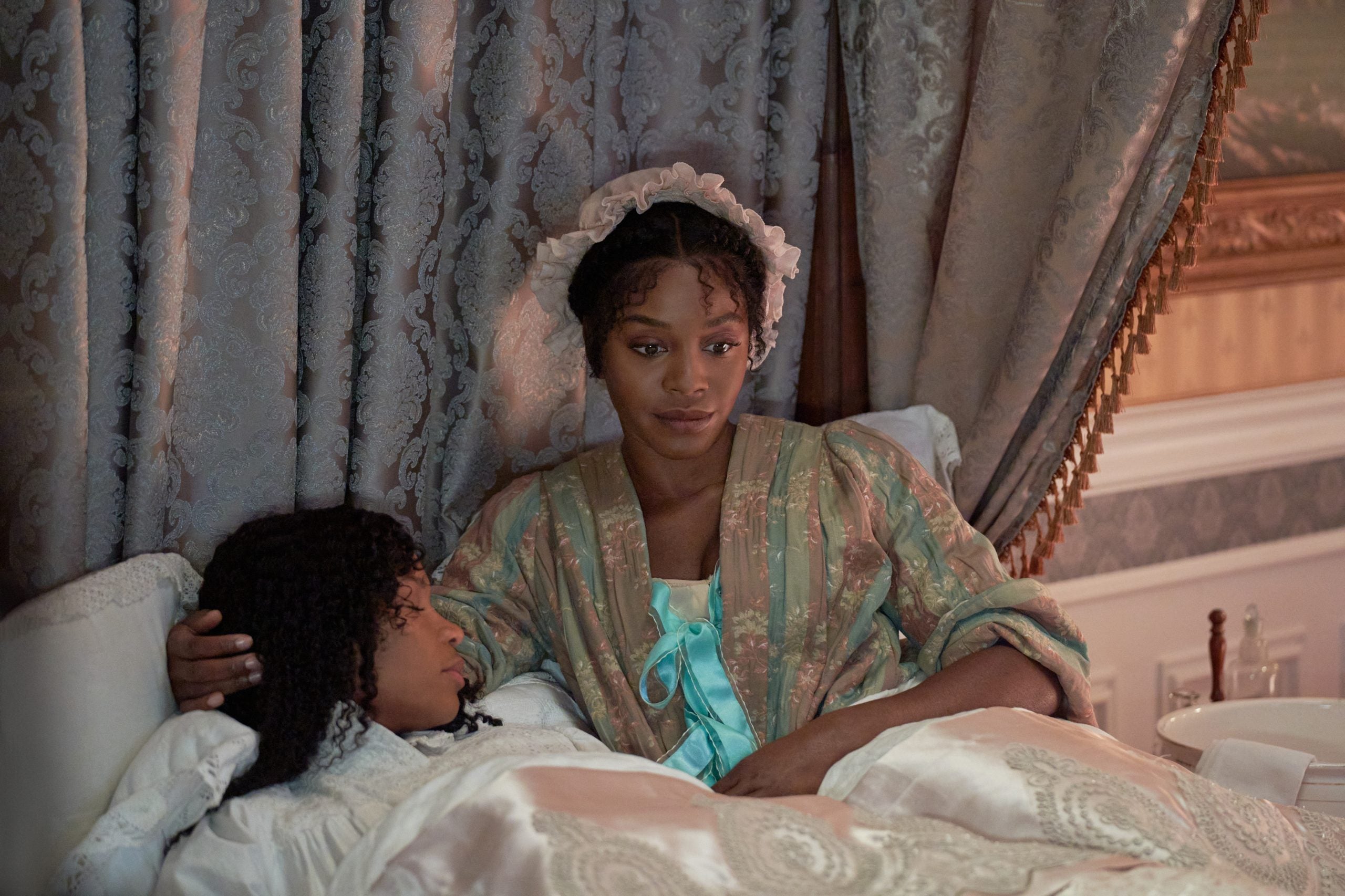
How common were interracial marriages in Europe and globally during the 18th and 19th centuries?
Well, some people say that all the brown-eyed people in London particularly come from this, population of free Blacks. Many of these people own habitation and plantations in the West Indies. They’re traveling often. If you know my book Island Queen, it talks about the relationship Prince William, the future King William IV had a deep and loving relationship with the highly successful Caribbean entrepreneur Dorothy Kirwan Thomas, a free Black woman. I don’t want anybody to think that this was the majority, but it was not so rare and unknown that Jane Austen wouldn’t write about it. And, what I want people to realize is it was also common for Black people to be free, learn about their businesses, and do certain things that were also common.
The wardrobe styling in this film is beautiful. What type of research went into examining the fashion, fabric, textiles, and cultural customs associated with getting dressed?
First, I have to shout out Kara Saun from Project Runway for costume design, and Kim Kimble for hair styling. Kara did like 68 pieces in 20 days. As a historian, I was able to show the team lots of Regency silhouettes. Before we went to Bulgaria to shoot, we did fashion presentations and conference calls. We went over the rules of fashion for the period. The women wore bonnets when they went out, and wore real gloves, etc. I found pictures of women with braids and different feather ornamentations. With Mahogany, we want our Black women to look beautiful, and jewel tones make us pop. Everything was based on the period.
When discussing the set design, we knew these homes were going to have ancestral paintings on the wall. We used real pictures. I provided the creative team with the portraits of Equiano, the general Thomas-Alexander Dumas, and the Black Duke of Florence. And, that’s why you see Dido Belle in a portrait in a scene. Every food you see is food that they would have eaten. And of course, instead of putting a fruited cake, I placed a Black cake.
What do you want the Essence readership to gain from this film?







I want the readers of Essence to realize that our history is powerful. It’s not limited. Our ancestors didn’t limit us to one story. So, we shouldn’t be limited to one story. Classic literature is important. We were all taught the classics in school. Therefore, we all can take classics, reimagine them, and think about them in different ways. Additionally, we can take contemporary themes, and make them another version of a time gone by. But, never assume that Regency and the Classics aren’t for everyone.
Hallmark Mahogany’s Sense and Sensibility premieres Saturday, February 24th on the Hallmark Channel at 8/7c, and is available on the Hallmark Movies Now app.





